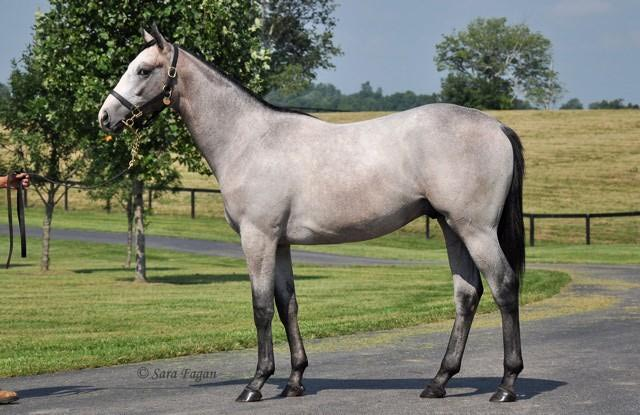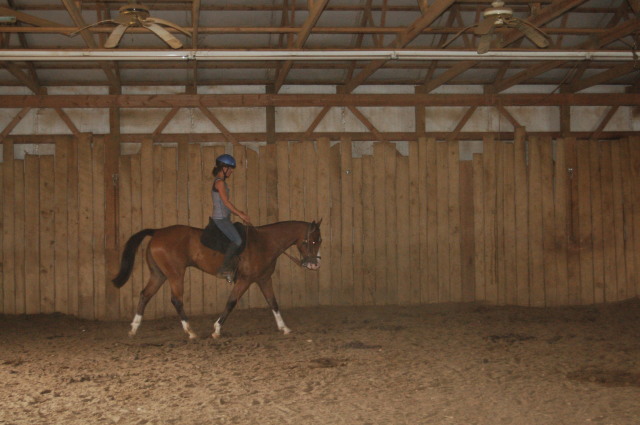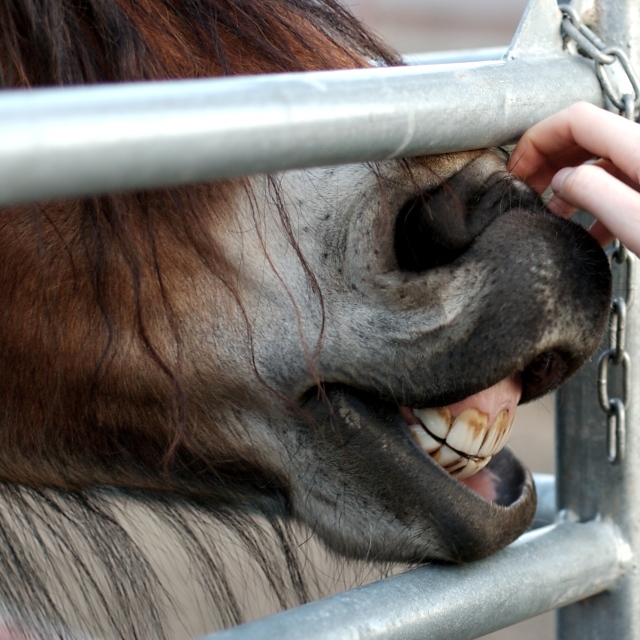QuestionMy horse has a small lump between his front legs.It feels squishy,but is kind of crusty.Could it be a SARCOID? Hes has it about 9 days and it seems to be the same size.
AnswerEquine sarcoids are slow growing, locally invasive masses that typically are found around the eyes, and on the legs, trunk and head of an affected horse. The underlying cause is not surely known, but veterinarians suspect that a virus similar to the papilloma virus of cattle is involved. Sarcoids tend to arise in areas that have a history of trauma or wounding. Although sarcoids tend to run in horse families, which suggests a genetic link, there are no known breed, sex, or geographical factors predisposing certain horses to develop sarcoids.
Diagnosis of sarcoids and the type of sarcoid present can be suggested by the appearance of the tumor. However, definitive diagnosis is made by looking at a surgical sample of the removed tissue under the microscope. (Generally a biopsy is not performed without a concomitant destructive procedure. Partial biopsy of sarcoids can stimulate rapid growth.) Sarcoid masses must be distinguished from skin cancer, granulomas, granulation tissue, and some other skin conditions.
There are several types of sarcoids, identified according to gross and microscopic appearance. Some sarcoids may look like warts; these solid roundish lumps are called the verrucous type and are distinguished from the fibroblastic type and the flat type. The fibroblastic type looks like proud flesh (granulation tissue) and frequently the tumor mass will have an ulcer on top of it. The flat-type sarcoids are ring-shaped, are not significantly raised, and tend to be scaly and crusty. A combination or transition type exists composed of the verrucous and fibroblastic types. The type of sarcoid is important in determining if treatment should be given or withheld.
There are several types of treatments for sarcoids. Generally the verrucous and flat types are monitored for transition to the fibroblastic type and for progression that is causing the horse a specific problem. Treatment of fibroblastic sarcoid lesions includes surgical excision, cryotherapy, laser excision, immunotherapy, chemotherapy and radiotherapy. No one method thus far employed has been consistently more successful in treating equine sarcoids than the others.
Surgical excision involves making two connecting incisions surrounding the mass and extending beneath it. Ideally the margins of the excised tissues should be normal and contain no tumor cells. Sometimes the location of the tumors will not permit adequate excision and surgical wound closure. In those cases another method may be undertaken. Because lesions may recur in as many as half of the surgically treated cases, the treating veterinarian may use another method adjunctively after surgery.
Cryotherapy is the application of intense cold to the tumors. Liquid nitrogen (or other modality) is placed on the tumors, creating a cold "burn." Over a period of several days the frozen tissue falls off, leaving a wound that should heal uneventfully.
The carbon dioxide laser, a thermal device, may also be employed to excise the masses.
Immunotherapy involves injecting the tumors with Equimune, bacille Calmette-GuTrin or other similar products. These agents stimulate the immune system. If the mass is large, surgery is performed to remove tissue and then the injection is performed at the base of the lesion. Usually three to four injections are required. It is important to know that a local inflammatory response is common 24 to 48 hours after injection and there have even been some cases of anaphylaxis (a severe allergic response to the injection). Sometimes anti-allergy medications are given before administering this type of treatment.
Chemotherapy may entail application of a topical agent (5-fluorouracil) or injection of cisplatin, a systemic anti-cancer drug, into the tumor. Large masses will usually be surgically reduced in size ("debulked") before chemotherapeutic injections are started. Several injections over a few weeks are usually necessary.
Radiation therapy involves implanting radioactive pellets into the masses. Although this treatment approach has a high success rate, its use is somewhat limited by logistical considerations, including the requirement to isolate the horse for a period of time after the radioactive pellets are implanted.
Since there are several types of therapies available, and since some of these are used in combination in selected cases, you will have to discuss the particulars of treatment with the veterinarian treating your horse.
****I have used crest on 3 sarcoids in 3 different horses with success in all 3. Cheapest remedy. I shy away from cortisone for various reasons.
Additionally, I had, and still have, a mare that had a large, (double loonie), sized growth. We put a rubber band around it tightly, and 3 weeks later it fell off with no recurrance.
Good luck!
Oh, and if you use crest, make sure it's the origional brand!
****The stuff is called Xtera and is worth the $91.00. You will apply it daily for 4 days. The sarcoid will look raging ugly, raw and then go hard and dry up and fall off.
Lovely stuff Works great.
We have used it two times and one was the size of a clementine (small orange). They have never returned.
Hope this helps.
Bill Gibson

 old saddle - best saddle
Question
old saddle
hello Lyn. today I trotted a
old saddle - best saddle
Question
old saddle
hello Lyn. today I trotted a
 leg bandages on fore legs
Question
leg bandages
hello maam. this is an ima
leg bandages on fore legs
Question
leg bandages
hello maam. this is an ima
 Bucking and running while longeing
QuestionRiding
QUESTION: I have a 7 yr unregiste
Bucking and running while longeing
QuestionRiding
QUESTION: I have a 7 yr unregiste
 orphan foal
Question
Angel
hi, i recently aquired an orphaned foal
orphan foal
Question
Angel
hi, i recently aquired an orphaned foal
 horse age
Question
horse age
hello, can you guess the horse age?
horse age
Question
horse age
hello, can you guess the horse age?